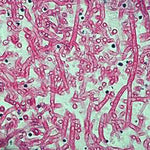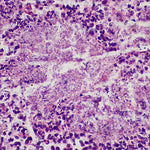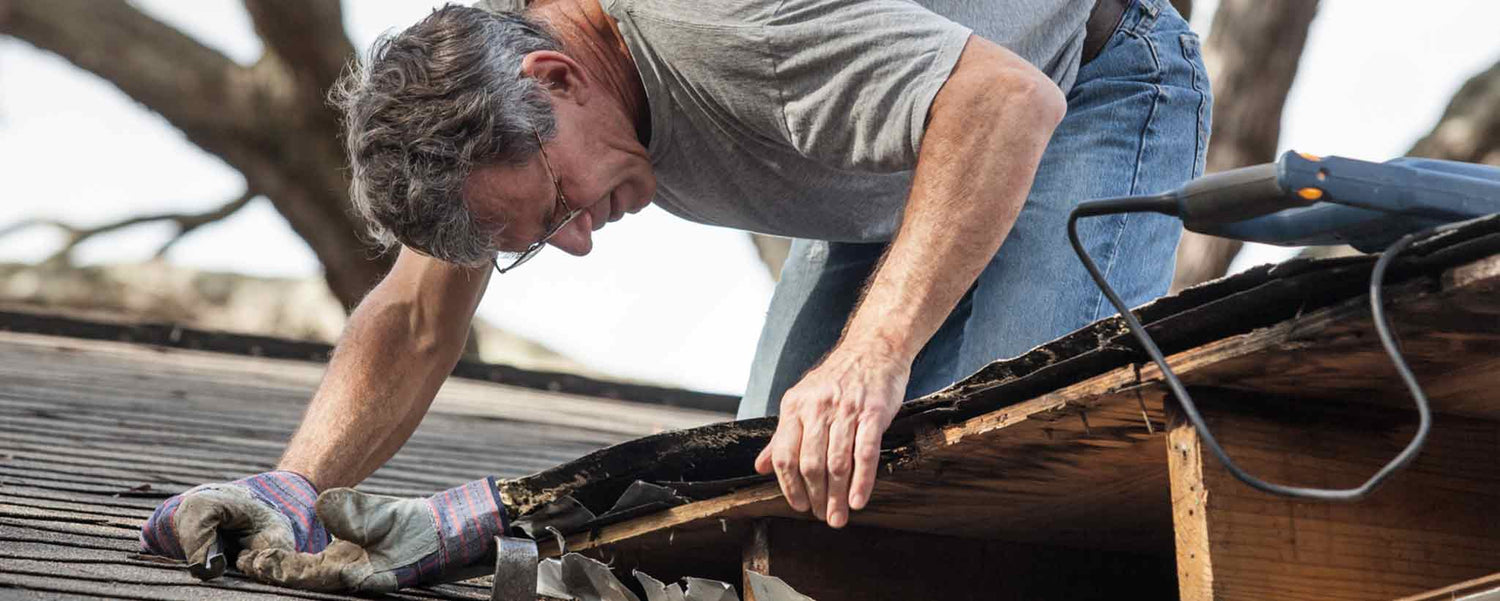Mold toxicity is not regarded as a nuisance, but rather, a major life-altering crisis.
Mold Contamination is Serious
The title scratches the surface of symptoms. Effects of toxic mold read like a list of patient illnesses in a Chicago trauma department. Going beyond dermatology or pulmonology, effects transcend immunology, gastroenterology, otolaryngology, and neurology.
Typical neurological symptoms include headache, extreme fatigue, dizziness, weakness, nausea, disorientation, memory problems, slowed reaction time, peripheral neuropathy, sensory neuropathy, and personality/mood changes. [1]
The chemical toxicity is not regarded as a nuisance, but rather, a major life-altering crisis. Unfortunately, toxicity symptoms are not easily observable by a physician and often seem anecdotal as reported by the patient.
Are Symptoms Spinning Out of Control?
According to Ritchie Shoemaker, MD, “Symptoms exhibited from the exposure to biotoxins (poisonous substances produced by living organisms) affect everyone differently. This extensive list of 73 symptoms is here to help you understand the many ways biotoxin illness can manifest itself. The listing does not mean that those who suffer from biotoxin illness will exhibit all of the symptoms listed here:” [1,2]
- Abdominal cramping
- Abnormal circulation
- Allergic reactions to foods
- Allergies
- Anxiety
- Appetite swings
- Bleeding ear
- Bleeding gums
- Blurred vision
- Body aches (joints, muscles, sinus)
- Body temperature deregulation
- Bronchitis
- Burning tongue
- Burning, red, or watery eyes
- Charley horses
- Chills
- Chronic Fatigue Syndrome
- Cognitive problems *
- Constipation
- Coughing
- Delayed normal activity recovery
- Depression
- Diarrhea
- Dizziness
- Endometriosis
- Fatigue
- Fever
- Fibromyalgia
- Frequent urination
- Headaches
- High cholesterol
- Hypoperfusion (decreased blood flow)
- Inflammation
- Insomnia
- Insulin resistance
- Interstitial Cystitis
- Irritable Bowel Syndrome
- Laryngitis
- Leaky Gut
- Light sensitivity
- Lyme Disease
- Metallic taste in the mouth
- Migraines
- Mood swings
- Morning stiffness
- Muscle cramps, jerks, twitches
- Nausea
- Numbness in the extremities
- Pain **
- Rashes
- Raynaud’s Phenomenon
- Respiratory problems
- Rosacea
- Seizures
- Sensitivity to bright light
- Shortness of breath
- Sinus congestion
- Sinus infection
- Skin sensitivity
- Sleep apnea
- Sleep disturbance
- Sore throat
- Static shocks
- Stiffness
- Sweating
- Swelling
- Tingling
- Tremors
- Vertigo
- Weakness
- Weight gain
- Weight loss
- Wheezing
* Difficulty assimilating new information; difficulty finding words; difficulty focusing; difficulty thinking or accomplishing other executive functions such as organizing and planning; difficulty with math or handling numbers; difficulty with short-term memory; short-term memory loss.
** Abdominal, arm, back, chest, chronic, cycles, feet, growing, hip, joints, leg, lungs, mistaking cold and hot, sinus, stabbing, or vulvar pain.
That is a vast number of symptoms. As indicated, not all are affected by toxic mold. But patients are not limited to just one. A skin rash can develop. [3] You may feel powerless to get out of bed. When you do, you can experience pain.
Brain fog can hinder your motivation to complete tasks or even remember what tasks you need to do. Extremely cold or hot weather may rob you of the motivation to do anything outside the house.
Symptoms Grouped by Mold Strain
There’s more. Researchers have linked specific symptoms to various strains of mold and mildew, as the following table demonstrates. [4]
| Aspergillosis [5] | Description |
|---|---|
Invasive  | Invasive pulmonary aspergillosis (IPA) remains a major cause of mortality in diabetics, infants, the elderly, people undergoing cancer treatments, AIDS patients, the immuno compromised and transplant recipients. It has also become suspect as a cause of “SIDS” Sudden Infant Death Syndrome and chronic obstructive pulmonary disease (CNS). Aspergillus fungi have been documented to colonize previously damaged lung tissue and commonly colonize the airways of patients with cystic fibrosis, emphysema, asthma, smokers and healthy lungs. [3] Invasive aspergillosis can occur in up to 3 percent of solid-organ transplant recipients and is associated with mortality rates of 20–76 percent. (Agnieszka Wójtowicz, et al.) |
Entry into the human body by breathing | |
| Colonization: Sinuses, Lungs, Bones, Muscles, Skin, Eyes, Heart, CNS | |
| Sinonasal | Ear, nose and throat problems. The Ethmoid sinus is the most common sinus affected by Aspergillious growth in the body. Headaches, sinus infections, chronic sinus infections, ear infections, and pain in the ears have been documented as a result of these infections. |
Sinus and Lung Infections | |
| Osteomyelitis | Osteomyelitis is an infection of the bone, resulting in joint stiffness and joint pain. It can be caused by a variety of microbial agents including mold. Certain species of mold have been suspect of causing bone marrow cancer. Other situations known to cause infection include:
|
Skeletal System Infections | |
Endophthalmitis | Endophthalmitis refers to intraocular inflammation involving the vitreous and anterior chamber of the eye. In most cases, endophthalmitis results from an infectious organism. Fungal (mold) endophthalmitis can be divided into the less common endogenous infections and the more common exogenous infections. These infections are generally caused by persons touching mold-contaminated surfaces and then rubbing their eyes and skin. If left untreated this condition can lead to blindness. Treatments may take up to two to three months for a person to recover, and there is no guarantee that 100% vision will be restored. Endogenous fungal Endophthalmitis is frequently an ocular (eye) manifestation of a systemic disease, usually occurring in people with one or more of the following risk factors: immunosuppression, intravenous drug abuse, bacterial sepsis, prolonged hyperalimentation, systemic antibiotics, corticosteroid therapy, recent abdominal surgery, malignancy, alcoholism, diabetes mellitus, trauma, and hemodialysis. Candida albicans is by far the most common pathogen isolated in endogenous fungal Endophthalmitis. Other pathogens include Aspergillus, Coccidioides, Cryptococcus, Blastomyces, and Sporothrix species. |
| Eye Infections | |
Endocarditis | Endocarditis is an inflammation of your heart's inner lining. The most common type, bacterial endocarditis, occurs when germs, mold, or other microbials enter your heart. These microbials come through your bloodstream from another part of your body, often your mouth. Bacterial endocarditis can damage your heart valves. If untreated, it can be life-threatening. It is rare in healthy hearts. Risk factors include having:
Symptoms include:
|
Heart Problems | |
Renal Abscesses | An abscess is a localized collection of pus in a hollow area formed by the breaking up of tissues. A renal abscess confined to the kidney, caused either by fungal (mold) or bacterial infection traveling to the kidneys through the bloodstream or by a urinary tract infection traveling to the kidney and then spreading to the kidney tissue. A renal abscess can develop from a source of infection in any area of the body. Multiple skin abscesses and intravenous drug abuse can also be sources of renal abscess. Complicated urinary tract infections associated with stones, pregnancy, and diabetes mellitus may also put a person at risk for renal abscess. Symptoms include:
|
| Kidney Problems | |
Cutaneous | The cutaneous mycoses are superficial fungal infections of the skin, hair, or nails. Essentially, no living tissue is invaded. |
| Skin, Hair and Nail Infections | |
| Blastomycosis [6] | Description |
Blastomycetic dermatitis  | This fungi/mold, mimics bacterial pneumonia and is commonly misdiagnosed as such. This has also been linked to affect the human body in the following areas and manners:
Other organs can be involved, including the Central Nervous System, Thyroid, Paricardium, Adrenal Glands, and gastrointestinal tract. |
Entry into the human body by breathing | |
Colonization: Sinuses, Lungs, Skin, Heart, Bone & Joint, Genitourary Tract | |
| Candidiasis [7] | Description |
Pulmonary Candidiasis  | Candida spp. are the most frequent fungal agents causing cardiac infection both in adults and children. Candidal endocarditis is a severe condition that has been traditionally associated with exceptionally high mortality and recurrence rates. Candida pneumonia is one of the most challenging of all the Candida infections
Infection of the pancreas with Candida spp. is another form of intra-abdominal candidiasis that was once considered extremely unusual for many years, but now it is being recognized as a more frequent problem. |
Entry into the human body by breathing | |
Colonization: Sinuses, Lungs, Pancreas, Kidneys, Heart, Bones, Urinary Tract | |
| Acute Pancreatitis | This may occur in pancreatitis, including gallstone pancreatitis, alcoholic, traumatic, post-surgical, post-traumatic or idiopathic. Candidal infection may be the cause of possible complications of pancreatitis. |
| Candida Osteomyelitis | Can involve any bone, however, the long bones are the most frequently affected in infants, while in adults the spine is most commonly involved. In order of frequency, the following sites are affected:
Symptoms include:
|
Fungus Ball in the Urinary Tract | This condition, sometimes called fungal “bezoar,” can be caused by Candida spp. However, penicillium and Aspergillious have also been reported as the cause of fungus balls. Fungus balls are commonly associated with the following underlying conditions:
|
| Coccidiodomycosis [8,9] | Description |
Coccidioides immitis  | Coccidioidomycosis is acquired from inhalation of the spores (arthroconidia). Once in the lungs, the arthroconidia transform into spherical cells called "spherules." An acute respiratory infection occurs 7 to 21 days after exposure and typically resolves rapidly. However, the infection may alternatively result in a chronic pulmonary condition or disseminate to the meninges, bones, joints, and subcutaneous and cutaneous tissues. About 25 percent of patients with disseminated disease have meningitis. |
| Cryptococcosis [10] | Description |
Cryptococcosis | The infection commonly starts following inhalation of the organism. The primary infection may remain localized in the lungs or disseminate throughout the body. Some authors have made the distinction between localized and disseminated cryptococcosis, based on the number of organs involved. However, cryptococcal meningitis can only occur once the fungus has reached CNS tissue from the primary point of entry. |
Do Not Neglect Mold Remediation

Unless you have pathology background, are an immunologist, or microbiologist, most of the data within the table above will likely soar straight over your head. The main takeaway is that the effects of mold on health are well documented.
Transmission is often through the lungs from airborne spores. Once inside the body, there are endocrine, pulmonary, neurologic and dermatologic manifestations of infection.
The microorganism most frequently associated with vertebral osteomyelitis (infection and inflammation of the bone and bone marrow) is the bacteria staphylococcus aureus. Another strain of staphylococcus aureus, commonly known as methicillin-resistant staphylococcus aureus (MRSA), is a particularly harmful microorganism that is more difficult to treat than other related strains. [11]
Streptococcus equisimilis may also be responsible for the onset of vertebral osteomyelitis, though it is thought to be less virulent than staphylococcus aureus. [12]
Spinal infections are often treated without surgery. Intravenous antibiotics are given in the hospital and may continue at home for four to six weeks. Oral antibiotics may need to be taken for several months.
Too many homeowners play fast and loose with water damage—reasoning that the water will simply evaporate or soak into the soil. There is a high probability that mold and mildew are triggers if somone is manifesting several of the above symptoms and discovers a leaky roof, dampness in the basement or crawl space, or sees other evidence like puckering paint on interior walls, white powder, or black spots.
Allergies Compound Effects of Toxicity
Compounding toxicity, some individuals are allergic to mold. This frequently triggers a rash or hives that may persist as long as the patient remains in contact/
Those allergic to molds may need to relocate either temporarily or permanently.
Agnieszka Wójtowicz, et al. reports that single-nucleotide polymorphisms increase susceptibility to invasive mold infection following solid-organ transplantation. The clinical study included 715 kidney transplant recipients, 190 liver transplant recipients, 102 lung transplant recipients, 79 heart transplant recipients, and 15 recipients of other transplants. [14]
Mold and mildew can cause vertigo, rashes, backaches, chronic fatigue syndrome (myalgic encephalomyelitis) and much more. A problem with chronic fatigue is that patients have little energy to leave the environment that is exacerbating the ailment. [15]
Drinking plenty of water and applying various creams may be helpful. But it is essential to eliminate the mold from the home or workplace as quickly as possible. Correct drainage problems before masking with paint or replacing carpet. In some cases, spores penetrate the fabric of furniture and clothing.
People who are allergic to molds may need to relocate either temporarily or permanently. Professional remediation services are required when there is extensive contamination, following a flood, or after water extinguishment of a building fire.
To support the writing of scholarly articles about otolaryngology, ClinicalPosters sells human anatomy charts, scientific posters, and other products online. You may sponsor specific articles, become a ClinicalNovellas Member, or remit a small donation.
ClinicalPosters sells human anatomy charts, scientific posters, and other products online to offset expense of the writing useful articles about otolaryngology. Slide extra posters into DeuPair Frames without removing from the wall.
Show your support by donating, shopping for ClinicalPins, becoming a ClinicalNovellas Member, or leaving an encouraging comment to keep the research going.
To support the writing of useful articles about otolaryngology, ClinicalPosters sells human anatomy charts, scientific posters, and other products online. You may sponsor specific articles or remit a small donation.
ClinicalPosters sells human anatomy charts, scientific posters, and other products online to offset expense of the writing useful articles about otolaryngology. Slide extra posters into DeuPair Frames without removing from the wall.
ClinicalPosters sells human anatomy charts, scientific posters, and other products online. You may remit a small donation or become a ClinicalNovellas Member.
You can support the writing of useful articles about otolaryngology by sponsoring specific articles, becoming a ClinicalNovellas Member, or remitting a small donation. Visible content is optimized for device size.








